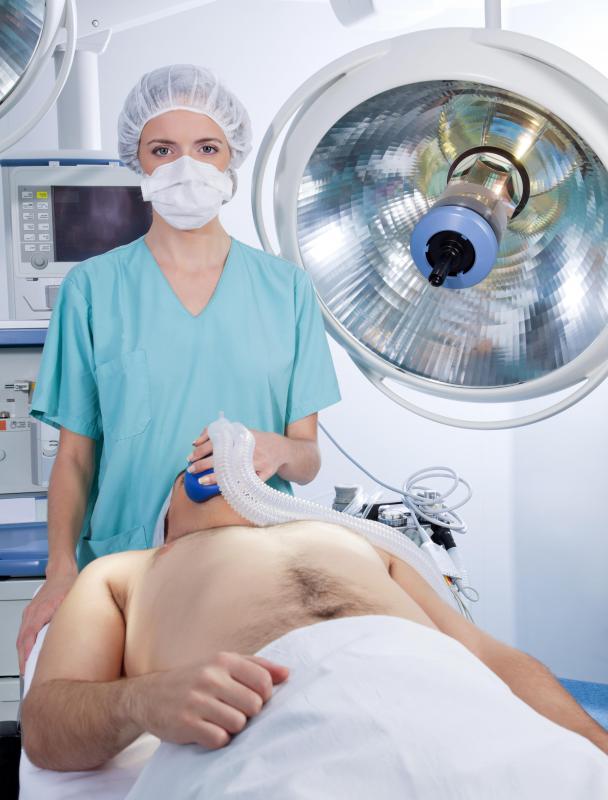At WiseGEEK, we're committed to delivering accurate, trustworthy information. Our expert-authored content is rigorously fact-checked and sourced from credible authorities. Discover how we uphold the highest standards in providing you with reliable knowledge.
What is Involved in Esophageal Sphincter Surgery?
Esophageal sphincter surgery is a procedure that serves to tighten the muscle between the esophagus and the stomach. Tightening the sphincter muscle, known as the lower esophageal sphincter, may relieve symptoms of gastroesophageal reflux disease (GERD). Reflux disease occurs when the sphincter muscle loosens and allows stomach acid to flow backward, up into the esophagus. Stomach acid can irritate the lining of the esophagus and cause pain and discomfort. Surgery to tighten the sphincter muscle can prevent stomach acid from going back up into the esophagus.
GERD is a severe form of indigestion that can lead to erosion of the esophagus. Symptoms of GERD include pain and burning in the area beneath the breastbone. Patients experiencing symptoms of GERD may try lifestyle and dietary changes, including eliminating caffeine and alcohol from the diet, as well as avoiding cigarettes and other nicotine products, to alleviate pain and discomfort. Caffeine, alcohol, and nicotine can all cause the esophageal sphincter to relax and not function properly. Eating small meals and never going to bed on a full stomach may also help alleviate symptoms of GERD.

Medications, such as antacids to neutralize stomach acid, or histamine blockers which reduce acid secretion, are usually prescribed for patients with GERD. Other medications, known as proton pump inhibitors, are prescribed to block acid production. In some patients, these medications are either ineffective or intolerable in the long-term. Esophageal sphincter surgery may be an option for these patients.

Esophageal sphincter surgery can be performed as an open or a laparoscopic surgery. The open surgery requires the surgeon to make a large incision in the abdomen. Laparoscopic surgery involves the use of a small camera and surgical instruments inserted into the abdomen through several smaller incisions in the abdomen. The laparoscopic procedure is more common and allows the patient to leave the hospital sooner and experience a faster recovery.

To perform the laparoscopic esophageal sphincter surgery, also known as fundoplication, the surgeon will first place the patient under general anesthesia. The surgeon will then make several small incisions in the abdomen. A camera and surgical instruments will be inserted into the abdomen. The surgeon will take the upper curved portion of the stomach, called the fundus, and curl it around the esophageal sphincter muscle and suture it in place. This reinforces the sphincter and restores its function in holding back stomach acid.

Patients should expect to spend one or two nights in the hospital and may need to eat only soft foods for several days after the surgery. Side effects from esophageal sphincter surgery include difficulty in swallowing and bloating after a meal. Some patients may experience a return of mild GERD symptoms over time.
AS FEATURED ON:
AS FEATURED ON:



















Discuss this Article
Post your comments